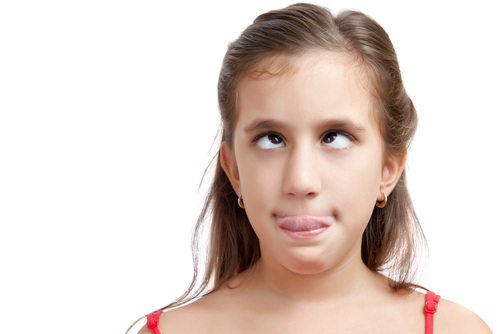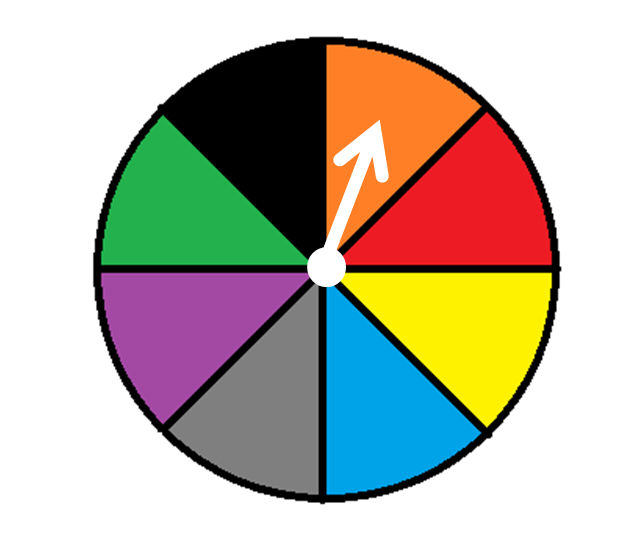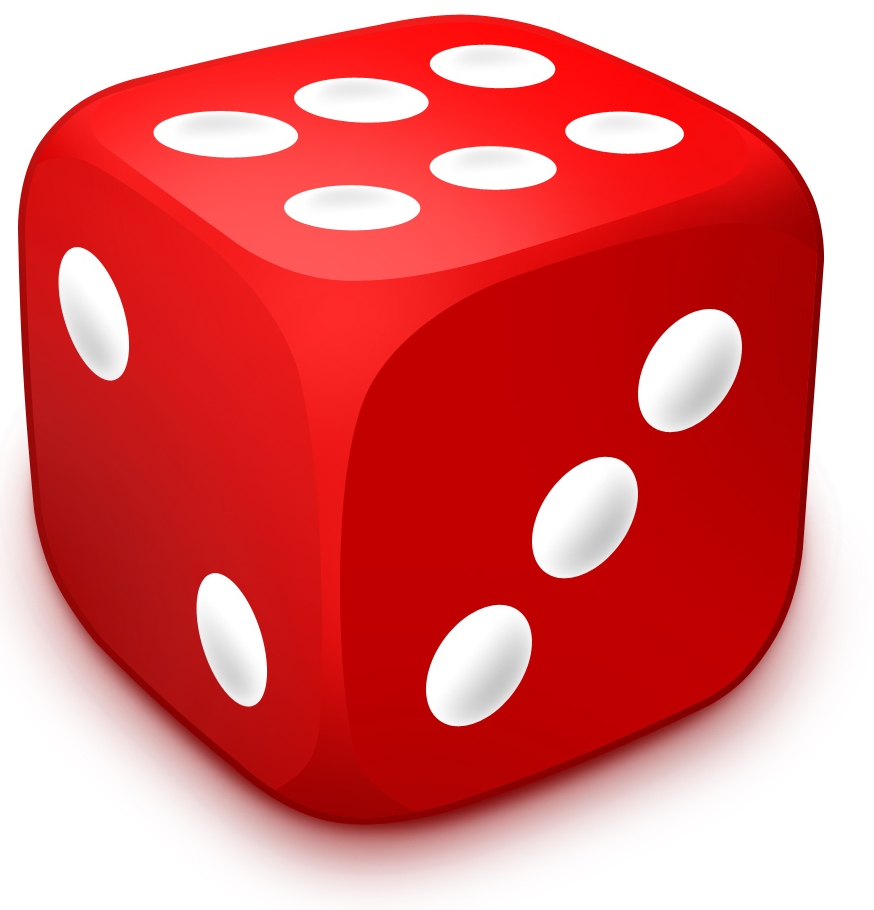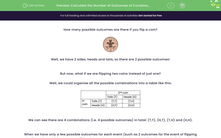How many possible outcomes are there if you flip a coin?

Well, we have two sides, heads and tails, so there are two possible outcomes!
But now, what if we are flipping two coins instead of just one?
Well, we could organise all the possible combinations into a table like this:

We can see that there are four combinations (i.e. four possible outcomes) in total: (T,T), (H,T), (T,H) and (H,H).
When we have only a few possible outcomes for each event (such as two outcomes for the event of flipping the first coin and two for the second), it might make sense to list them - but if we have more, listing all the combinations might become quite tedious!

So how could we work out the number of combinations differently?
Well, if we think about it, each combination occupied one cell in the table.
The number of cells can be found easily by multiplying the number of rows with the number of columns.
Therefore, the number of all possible outcomes = number of outcomes for the first event x number of outcomes for the second event
For example, for our two coins we have
2 x 2 = 4
Let's have a look at another example!
How can we find the number of possible outcomes there are when we spin the following spinner and throw a die?


When we spin this spinner, there are eight possible outcomes.
When we throw the die, there are six possible outcomes.
To calculate how many possible outcomes there are when we do both, we multiply the number of the possible outcomes for spinning the spinner and the number of the possible outcomes for throwing the die to get:
8 x 6 = 48
Oh wow, there are 48 possible outcomes altogether! Aren't we glad that we have a quicker way to find the number of combinations than listing them all?

In this activity, we will calculate the total number of combinations (i.e. number of all possible outcomes) of two (or even more!) events.
When there are two (or more) events at the same time, we call them combined events.
For example, we've found that there are 48 possible outcomes for the combined events of spinning the spinner and throwing the die.
Ready to put this into practice?








